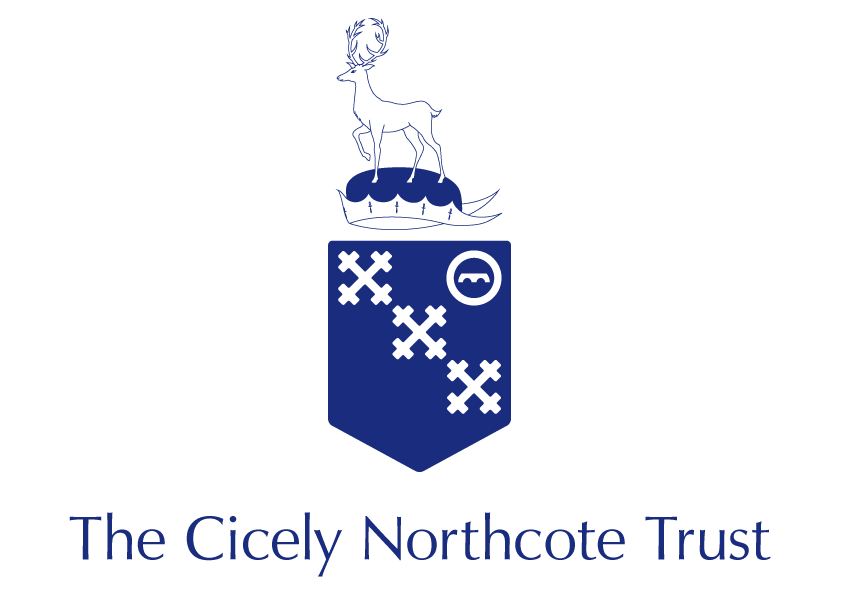History
A brief description of the Trust’s foundation and work is given below in an extract from one of two* short histories of the Trust.
“The Cicely Northcote Trust is Conceived”
After a serious illness, Hugh Northcote, accompanied by his friend and physician, Dr Alfred Howitt of St Thomas’ Hospital, went to visit some of his relatives in Boston (Massachusetts). While there they became interested in the work of Dr Richard Cabot and his Social Worker, Ida Cannon, who had started medical social work in the Massachusetts General Hospital. Dr Cabot had come to the conclusion, as a medical practitioner, not as a social reformer, that a hospital could not treat its patients properly without some knowledge of their homes, finances, thoughts and worries. A full understanding of these required a trained social worker so he and Miss Cannon worked as a team.
Hugh Northcote brought back to England an idea of what could be done. His sister, Cicely, had died in Italy of paratyphoid at the age of eighteen. He now believed that a fitting memorial to her would be to set up in England, in her name, work similar to that being done at the Massachusetts General. However, he learnt from Mr Howarth, a young surgeon at St Thomas’, that work of that nature had already started four years earlier in 1905 in the Hospital when a Miss Anne Cummins had been appointed as the first Lady Almoner. So the wealthy young man met the able young Almoner. Hugh Northcote made a gift of £15,000 to be used by Miss Cummins to extend her work. Miss Cummins welcomed the proffered aid and the Trust was born.
“An Outline of the Work of the Northcote Trust from 1909-1979”
The gift made by Hugh Northcote in 1909 setting up the Trust was used to carry out a system of social work within St Thomas’ Hospital using trained social workers. Over the years, work of a most varied kind was undertaken, sometimes with the aid of generous benefactors. It included the care and education of mothers with small infants; the fight against tuberculosis and the aftercare service for cancer patients. There was a hostel for pregnant women and girls suffering from venereal diseases, and their babies. There was the assistance given to the (Royal) Melbourne Hospital in starting its own Almoner Service, leading to the funding of the Victorian Institute of Almoners.
During the two world wars the Trust was fully active in conjunction with St Thomas’ Hospital. Even before the end of the second war the Trust had embarked on running clubs for young people, which later on included those physically and mentally handicapped and a (possibly the first) Senior club. In 1944 the Trust was already discussing a proposal to assist St Thomas’ Hospital to open an Occupational Therapy Department.
There was the innovative work with deaf children; there were the children’s club which did much to ease the strain of the overcrowded conditions of the immediate post war years. Many years on there was a programme to draw in isolated mothers in the community and those of ethnic origin. And there was the series of projects carrying out pioneering work on specific problems.
* “The Enterprise Triangle, The Story of the Cicely Northcote Trust 1909-1979” by Sheena Steel. (The first history of the Trust is told in “The Northcote Trust 1909-1959” by Cherry Morris.)
From the beginning the principle of the Northcote Trust has been to hand over the work pioneered, researched or developed, to the organisation best fitted to carry it on, once a need has been clearly established. In this way the Trust was able continually to turn to fresh fields of need, and overlapping of effort is avoided.
The Trust’s work was begun from the Almoner’s office within St Thomas’ Hospital. Later a house (37) was acquired in Royal Street (opposite the hospital). In 1957 a purpose built Northcote house (St Thomas’ Social and Welfare Centre) was opened near the railway bridge at the bottom of the street. This building had to be demolished when the EuroStar line at Waterloo was constructed. Without premises in which clubs and groups could meet the Trust has concentrated on funding projects with a research base and the publication of reports on that work.
However with the appointment of a Project Worker in 2001 a brief return to ‘direct action’ was made with the Homework Club which was run at Lillian Baylis School to help pupils, whose families were asylum seekers, to work on a level with their class peers. This work, having been pioneered by the Trust, was taken over by the school.
Two further projects with very tangible results followed. The first was the publication of a poster which would assist asylum seekers to obtain the help they needed from the NHS. The second was a video (now DVD) about how carers might be supported by their GP. The making of the video was preceded by a conference ‘Cares and Doctors - Working Together’, the aim of which was to listen to carers’ views on how the services provided for them might be improved.
After 2002 the work of the Trust returned to the funding of projects, the need for which was brought to the Trust’s attention as a result of grant applications.
The Trust continues to meet its charitable objectives through grant making, each year selecting a different area to focus its support, but always within South London.
